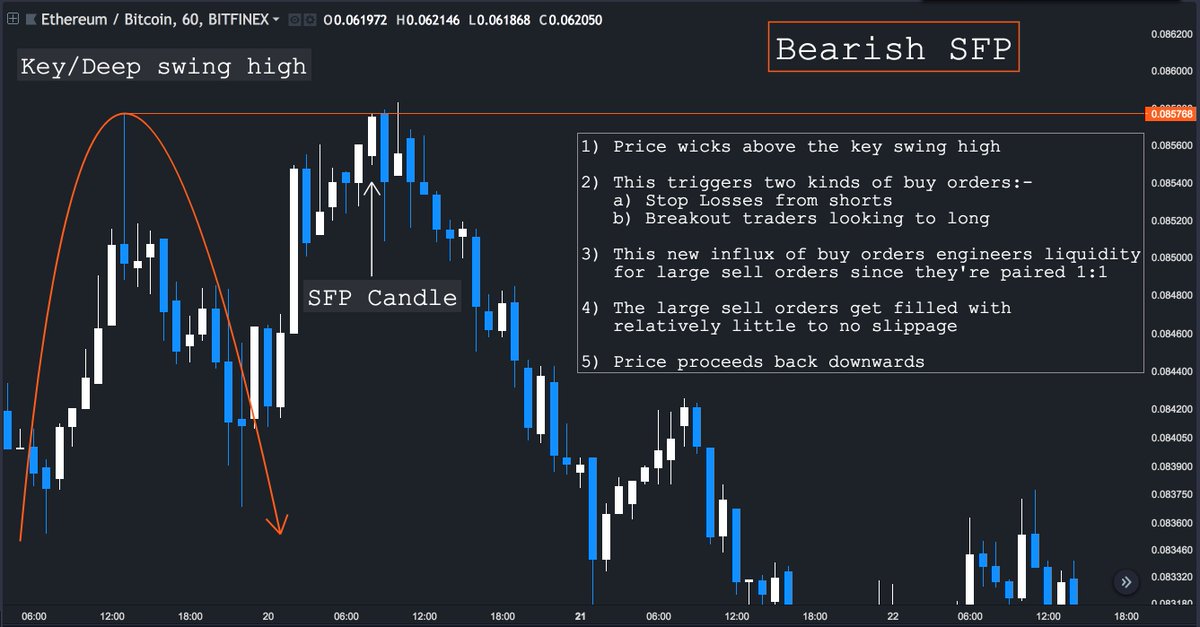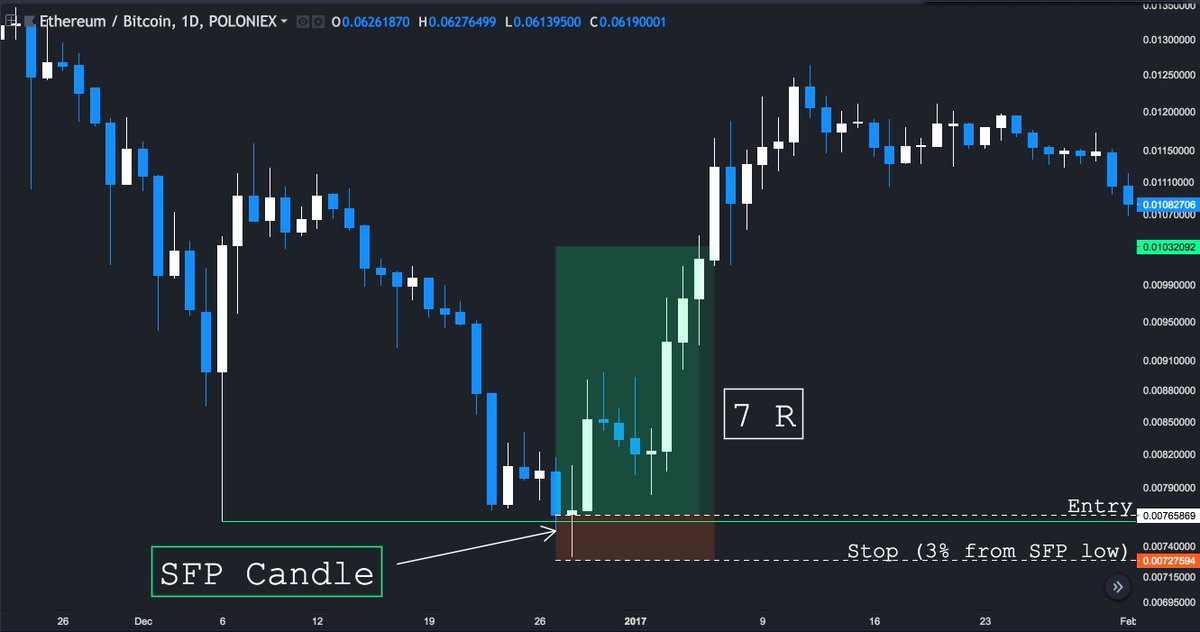#TATip Swing Failure Pattern
Seeing a lot of traders use/abuse this pattern lately, thought I'll put up a small primer.
Index:
i) Premise
ii) Identification
iii) Trading (Entry/Stop)
iv) Miscellaneous
Seeing a lot of traders use/abuse this pattern lately, thought I'll put up a small primer.
Index:
i) Premise
ii) Identification
iii) Trading (Entry/Stop)
iv) Miscellaneous
i) Premise
The SFP is hinged on the basic idea that large players need equivalently large liquidity to fill their orders and avoid slippage by buying at the current market prices.
Once they fill their orders, price usually reverts back.
How do they achieve this?
The SFP is hinged on the basic idea that large players need equivalently large liquidity to fill their orders and avoid slippage by buying at the current market prices.
Once they fill their orders, price usually reverts back.
How do they achieve this?
ii) Identification
Look for key swing points (/\\ or \\/) on a chart, swing high/lows that stand out instantly.
When price breaks these points, two things will happen:-
a) Stops will get triggered
b) Breakout traders will be baited
This will create the large liquidity required.
Look for key swing points (/\\ or \\/) on a chart, swing high/lows that stand out instantly.
When price breaks these points, two things will happen:-
a) Stops will get triggered
b) Breakout traders will be baited
This will create the large liquidity required.
iii) Trading (Entry/Stop)
Entry: On the close of the SFP candle (the candle that breaks the swing high/low and closes below/above)
Stop: Discretionary stop above/below the SFP candles high/low. Manually exit if price closes above/below SFP high/low.
TFs: Any (I use the 4h/1D)
Entry: On the close of the SFP candle (the candle that breaks the swing high/low and closes below/above)
Stop: Discretionary stop above/below the SFP candles high/low. Manually exit if price closes above/below SFP high/low.
TFs: Any (I use the 4h/1D)
iv) Miscellaneous
• Mostly applicable on BTC and large caps.
• This can also be used to identify range fakeouts.
• Check all exchanges to check if the SFP is consistent.
• Lastly: A wick below/above a low from 3 bars prior and a close above/below is
NOT an SFP.
• Mostly applicable on BTC and large caps.
• This can also be used to identify range fakeouts.
• Check all exchanges to check if the SFP is consistent.
• Lastly: A wick below/above a low from 3 bars prior and a close above/below is
NOT an SFP.

 Read on Twitter
Read on Twitter










